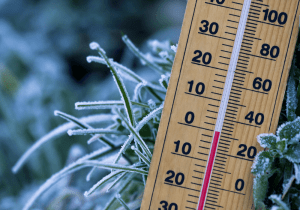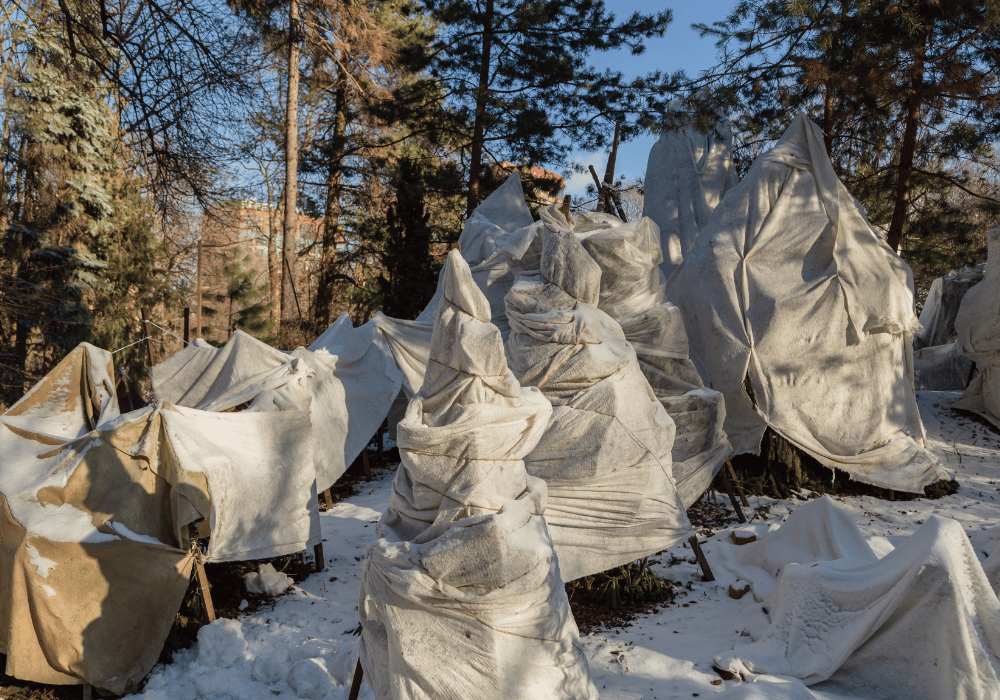Young trees are the future of your landscape. Whether they’re part of a bustling orchard, a decorative addition to your lawn, or part of a larger reforestation project, their survival through frosty winters is critical. Below-freezing temperatures can wreak havoc on these trees, causing damage that stunts their growth or, worse, leads to their demise. Luckily, with careful planning and proper protection techniques, you can safeguard your trees from the worst of winter’s wrath. This guide will walk you through why freezing temperatures are dangerous for young trees and practical methods you can use to protect them.
 How Freezing Temperatures Affect Young Trees
How Freezing Temperatures Affect Young Trees
Freezing temperatures are one of the biggest challenges for young trees, especially in the early years when their natural defenses are still developing. Here’s how cold weather can harm them.
Cracked Bark
When temperatures drop rapidly, the outer bark of a tree can contract faster than the inner wood. This results in frost cracks, long vertical splits in the bark that expose the tree to potential infections and pests.
Root Damage
Young tree roots are particularly vulnerable to freezing. Without adequate insulation, ice can form deep within the soil, damaging roots and slowing the tree’s ability to absorb nutrients and water.
Water Loss
Cold winds and low humidity can dehydrate young trees. This is especially true for evergreen trees, which lose water through their needles even in winter.
Delayed Growth
Exposure to freezing temperatures can affect the tree’s cellular structure, causing stress that slows growth come springtime.
Understanding these risks underscores the importance of proactive protection measures. Now, let’s explore effective ways to protect young trees from freezing temperatures.
Four Methods to Protect Young Trees
Wrapping the Trunk
Protecting a tree’s trunk is one of the easiest and most effective ways to prevent frost damage.
1. Use Tree Wrap Products
Wrap the trunk with a commercial tree wrap or burlap. Start at the base of the tree and work your way up, overlapping slightly as you go. Secure the wrap with twine or tape, but avoid tying too tightly as this can cause damage.
2. Protection From Frost Cracks and Pests
Wrapping provides an additional layer of insulation, minimizing the chances of frost cracks while also deterring pests like deer from nibbling on the bark.
3. When to Wrap
Install the wrap in late autumn before the first major frost and remove it in early spring to prevent moist conditions that can encourage disease.
 Mulching
Mulching
Mulch is another excellent way to shield young trees from extreme cold. It helps insulate the soil and retain moisture around the tree’s root zone.
1. What Mulch to Use
Organic materials like bark, straw, or shredded leaves create an effective insulating layer.
2. How to Apply
Spread a 5–10 cm (2–4 inch) layer of mulch in a wide circle around the tree, but avoid piling it against the trunk to reduce the risk of rot.
3. Benefits
Mulch not only protects roots from freezing temperatures but also suppresses weeds and improves soil quality as it decomposes.
Using Anti-Desiccant Sprays
Anti-desiccants coat tree leaves with a waxy substance that prevents moisture loss. They’re particularly beneficial for evergreen trees, which continue to lose water even during winter.
1. How to Apply
Spray anti-desiccants liberally on the foliage of your young trees. Follow the manufacturer’s instructions regarding dilution and application timings.
2. When to Use
Apply the spray in late fall when temperatures are consistently above 0°C (32°F). You may need to reapply mid-winter if there’s heavy snowfall or rain.
3. Extra Benefits
Anti-desiccants also help protect your trees from sunscald, a condition that damages bark during warm, sunny winter days.
Building Temporary Shelters
Creating a physical barrier against winter weather can make a significant difference for your young trees.
1. Windbreaks
Erect a windbreak using stakes and burlap on the side of the tree most exposed to harsh winds. This will shield it from desiccating winter gusts.
2. Cold Frames and Cloches
For smaller trees, consider building frames or cloches using PVC pipes or wooden stakes wrapped in plastic or frost blankets.
3. Placement and Monitoring
Temporary shelters should provide ample airflow and not rest directly on the tree. Be sure to monitor as the season progresses to ensure no branches are damaged by shifting structures.
Tips for Effective Tree Protection
Beyond implementing the methods listed above, here are some additional tips for keeping your young trees healthy all winter long.
- Hydrate Before Winter
Water your trees deeply in late fall before the ground freezes. Moist soil retains heat better than dry soil, providing a buffer for tree roots.
- Prune With Care
Avoid heavy pruning in late fall, as this can stimulate new growth that may not survive freezing temperatures. Remove only dead or diseased branches.
- Choose Hardy Species
If you’re planting new trees, select species that are well-suited to your local climate. Cold-hardy varieties are better equipped to handle freezing temperatures.
- Inspect Regularly
During winter, check on your trees periodically to ensure wraps, mulch, or shelters are still intact and functioning as intended.
Caring for young trees during winter is an investment in their future. By implementing a combination of trunk wrapping, mulching, anti-desiccant sprays, and temporary shelters, you can ensure your trees not only survive but thrive when spring arrives. Remember, healthy trees contribute to a healthier planet, so your efforts have benefits beyond your immediate property. Take these steps now, and enjoy the rewards of strong, beautiful trees for years to come.


